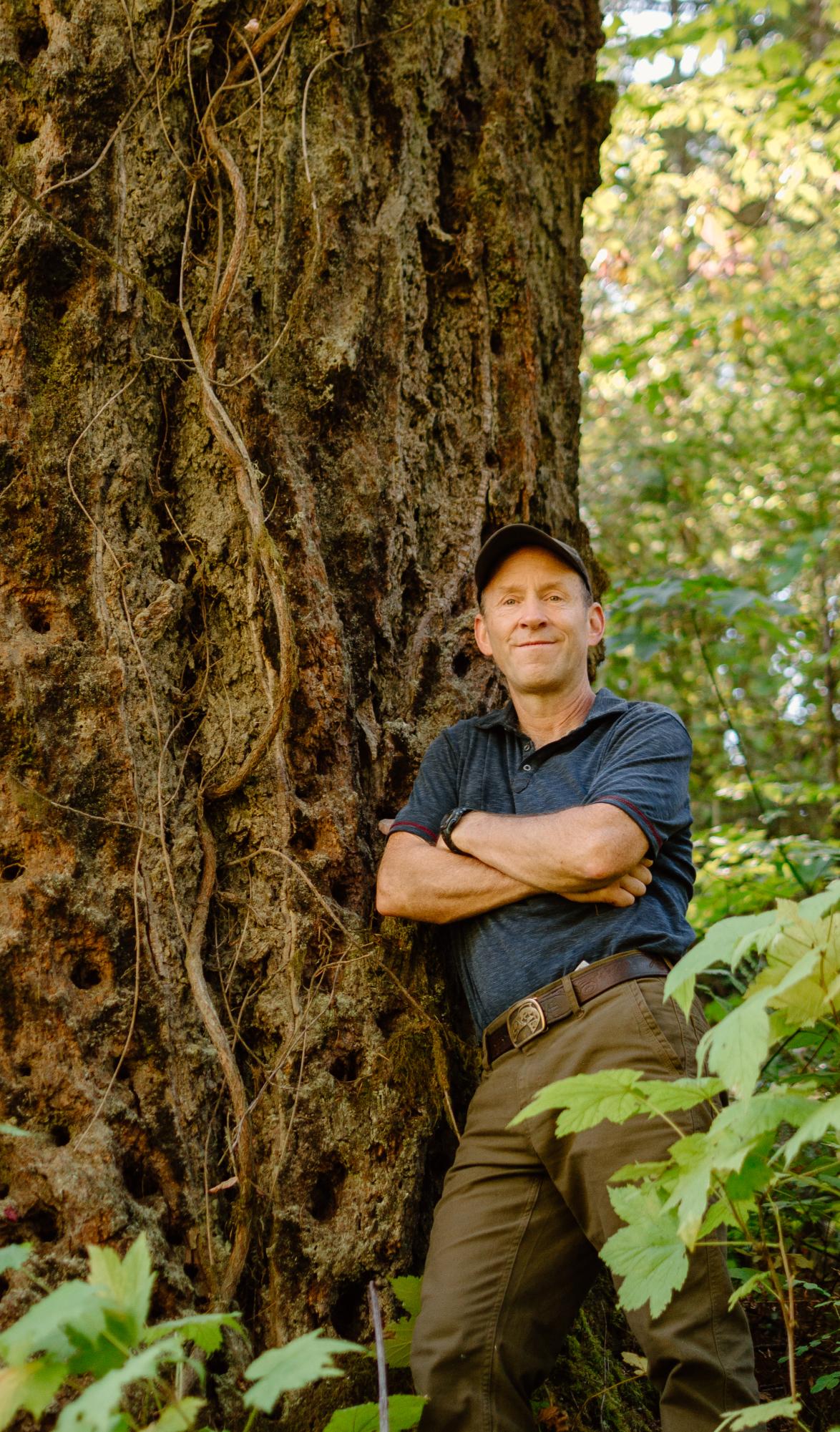Scattered across Oregon State University’s verdant research forests stand Oregon’s old-growth trees. Although there aren’t many, these trees are highly valued for providing ecological benefits to the forests, as well as spiritual and recreational significance.
“Old-growth forests provide many important ecological and environmental functions, including preserving biodiversity and wildlife habitat, greatly reducing the risk of wildfire, storing and filtering water (and) cooling and humidifying the air,” said concerned Corvallis resident Doug Pollock.
After OSU cleared nearly 16 acres of centuries-old trees in the McDonald Research Forest in 2019, Pollock started a group called Friends of OSU Old Growth.
The group advocates for positive change in the OSU College of Forestry, and aims to protect old trees and stands.
According to an article published by CNN, a Doug Fir around 420 years old was cut down, along with other trees in the stand that were around 80- 260 years old. These trees were cut down due to the logging activities that generate revenue for the College of Forestry in the research forests.
Since the incident, OSU Old Growth has been aiming to protect older tree stands in OSU’s research forests, as well as create positive change in the College of Forestry.
“We have certainly made mistakes, and we have learned from and adapted our processes as a result,” said Dean of OSU College of Forestry Tom DeLuca.
Through advocacy efforts, Friends of Old Growth OSU was able to get the College of Forestry to reinstate their 2005 management plan for McDonald Dunn that had been abandoned by a previous dean in 2009.
According to DeLuca, one of the main goals of the 2005 Forest Plan is sustainable forest management. This includes various management practices that demonstrate the tradeoffs of timber harvest types and stand structures.
“The 2005 McDonald-Dunn Forest Plan was rescinded in 2009 due to the costs associated with its implementation during the Great Recession. The OSU Research Forests must be financially self-sustaining through timber harvest, and the 2005 plan did not allow for this given the unforeseen economic conditions at the time,” DeLuca said.
According to Pollock, over the past decade, forest stands between 70 and 135 years of age have been routinely cut down in the OSU research forests.
“Stands in this age range are currently managed under Theme 2 of the 2005 McDonald-Dunn Forest Plan, which emphasizes long rotations of even-aged Douglas-fir dominated plantations for high-quality, growth-maximizing timber production,” said DeLuca.
According to DeLuca, OSU does not make a practice out of harvesting old trees. Since the harvest in 2019, the college has learned from and adapted its policies.
Also since the incident, Pollock and his team have gotten the 36-acre Sulphur Springs old-growth stand protected and an agreement to protect individual trees, not just stands, that are over 160 years old.
According to DeLuca, the College of Forestry is working on a new management plan for the McDonald-Dunn forests that will be implemented in 2024, which will include an additional mature forest stand in the reserve network.
“We manage the forest for teaching, research and outreach purposes, as well as trying to meet recreation and habitat objectives at the same time, and of course, revenue that supports the management and maintenance of the forest and the recreational offerings,” DeLuca said.
The management strategies of this plan will allow the College of Forestry to conduct research and identify the tradeoffs associated with forest management, which are based on existing stand dynamics and age, according to DeLuca.
According to Pollock, there should be a shift toward minimally invasive ecological forestry practices and research in the College of Forestry. This includes the discontinuation of clearcutting, slash burning, and herbicide use.
Pollock and his team will continue to spread awareness about old growth trees and advocate for those changes to happen.
“We will continue our focus on reforming the planning process for the McDonald-Dunn and advocating for better stewardship of these public forests,” Pollock said.
















































































































